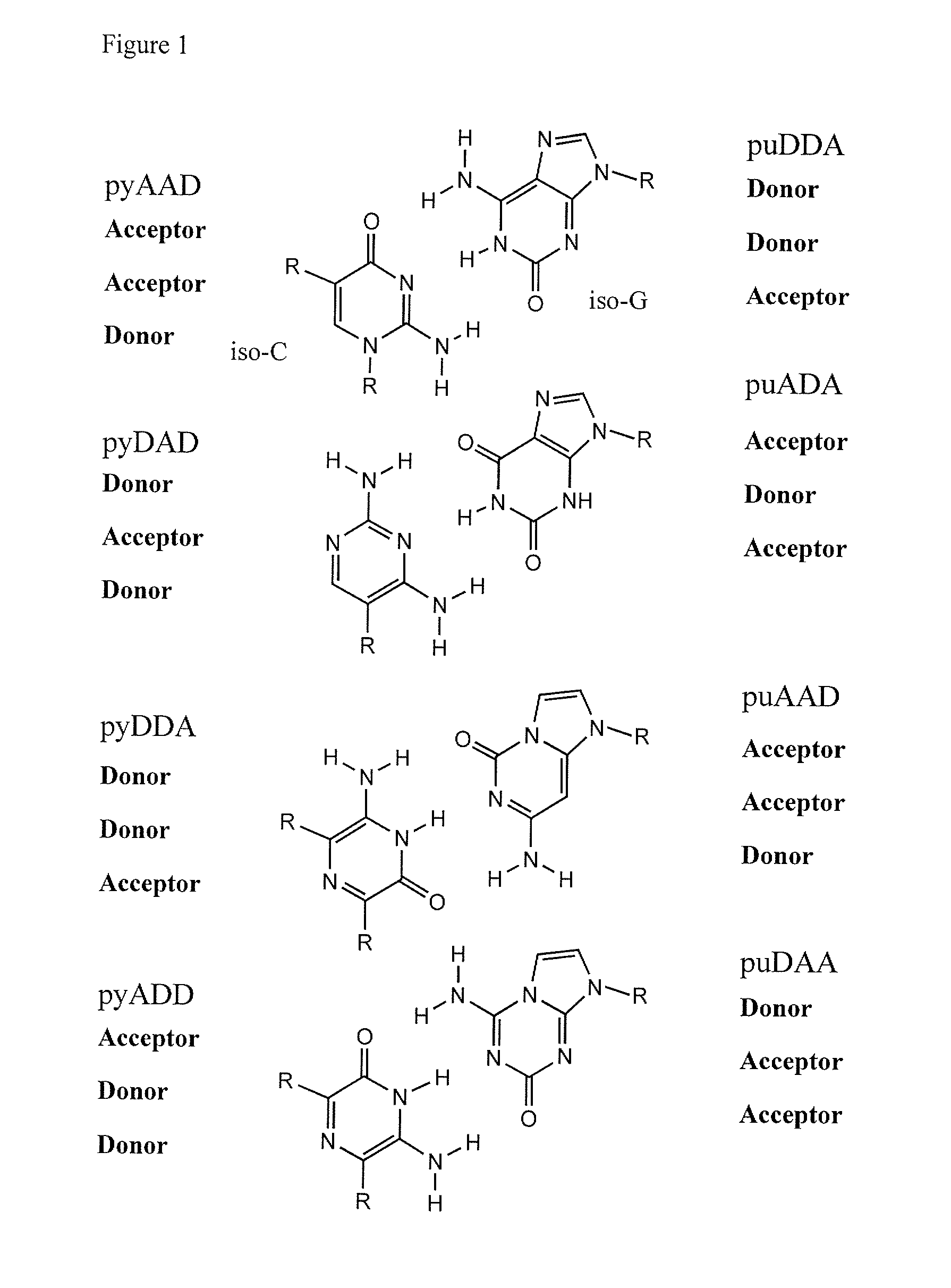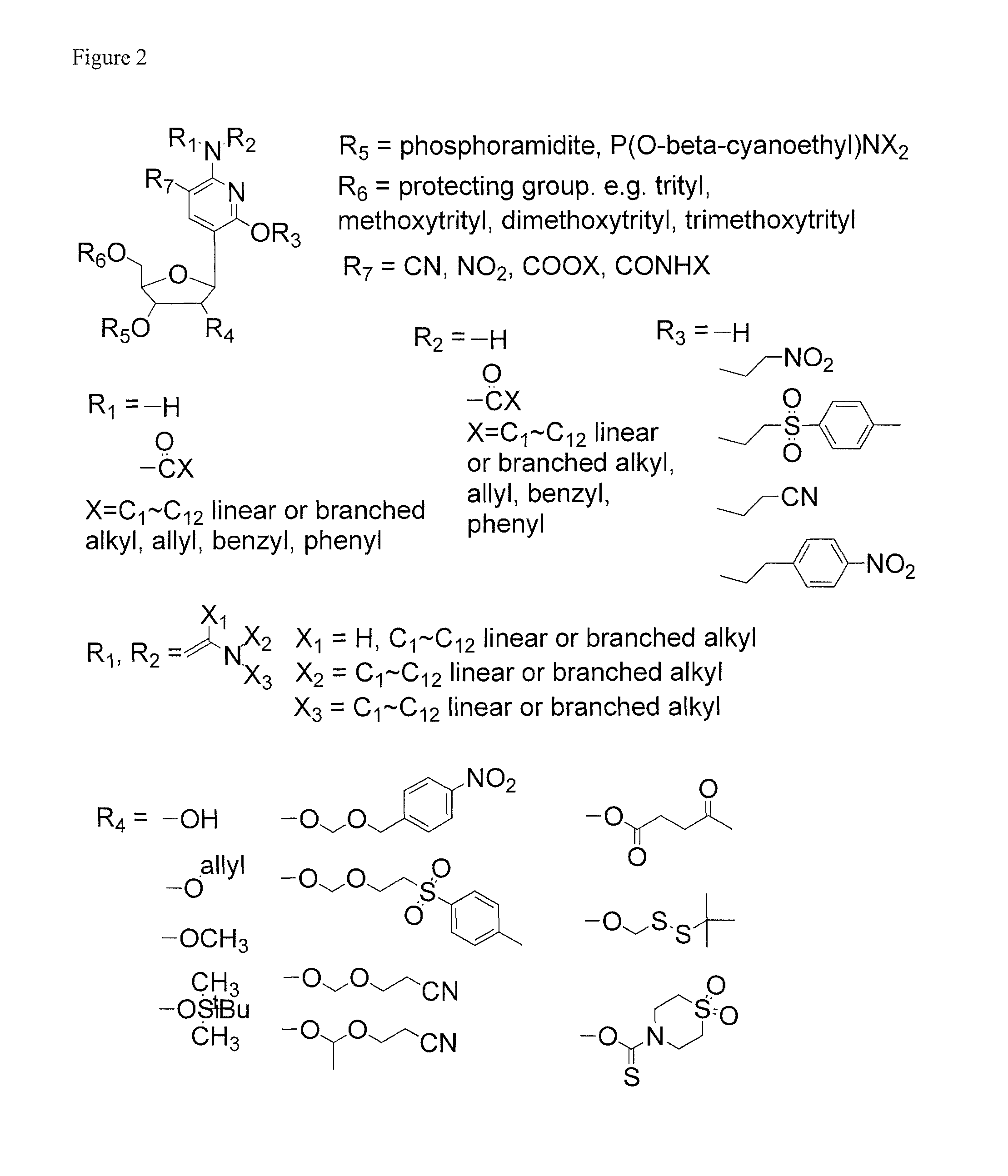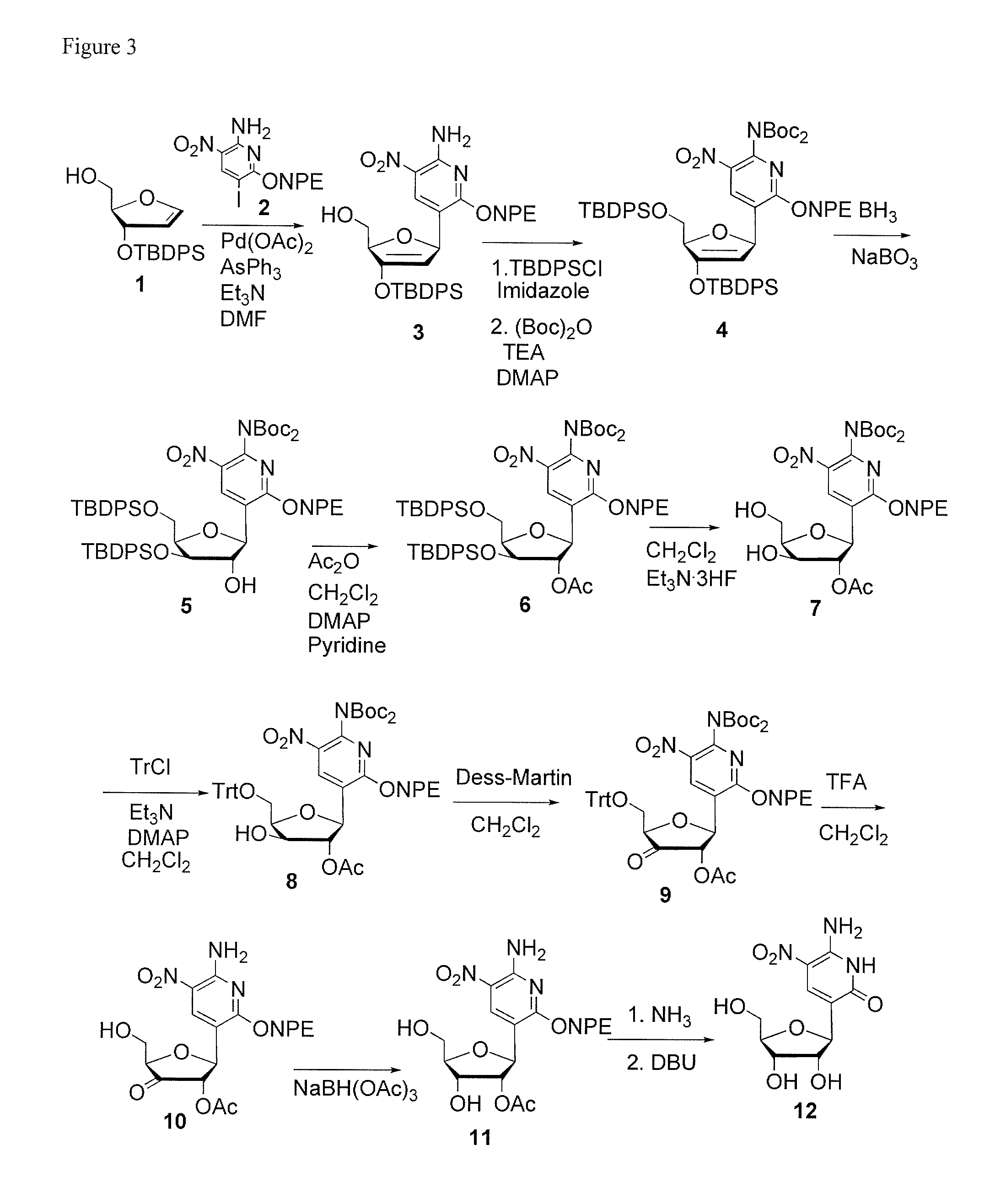Ribonucleoside analogs with novel hydrogen bonding patterns
a technology of nucleic acid analogs and ribonucleosides, applied in the field of nucleic acid chemistry, can solve the problems of limited functionality present on natural oligonucleotides, constraining the chemist attempting to design catalytically active rna molecules, and specific compositions used to implement the various non-standard hydrogen bonding patterns were not optimal,
- Summary
- Abstract
- Description
- Claims
- Application Information
AI Technical Summary
Benefits of technology
Problems solved by technology
Method used
Image
Examples
example 1
Preparation of the Ribonucleoside Analogs Carrying a Heterocycle that Implements the pyDDA Hydrogen Bonding Pattern
Compound Numbers Make Reference to FIG. 3
Compound 3 (5-[2′,5′-Dihydro-5′-(hydroxymethyl)-3′-[(1,1-dimethylethyl)diphenylsilyl]oxy-2′-furanyl]-3-nitro-6-[2-(4-nitrophenyl)ethoxy]-2-pyridinamine)
[0067]A mixture of triphenylarsine (146 mg, 0.476 mmol) and palladium acetate (53 mg, 0.238 mmol) in DMF (10 mL) was stirred at rt for 30 min. It was added to a mixture of glycal (compound 1, 930 mg, 2.62 mmol), compound 2 (1.025 g, 2.39 mmol), and triethylamine (0.66 mL, 4.77 mmol) in DMF (10 mL) and the resulting mixture was stirred at 70° C. for 18 hrs. It was poured into water (100 mL) and extracted with ethyl acetate. The combined organic layer was dried over Na2SO4, filtered and concentrated. The residue was purified by flash chromatography (silica gel, ethyl acetate:hexanes=1:2 to 1:1) to give a yellow solid (1.03 g, 66%).
Compound 4 (N,N-Bis[(1,1-dimethylethoxy)carbonyl]-5-...
example 2
Synthesis of a Ribonucleoside Analog Implementing the puAAD Hydrogen Bonding Pattern
Compound Numbers Make Reference to FIG. 4
[0078]Compound 3 (2-Amino-8-(2,3,5-tri-O-benzoyl-β-D-ribofuranosyl)-imidazo[1,2-a]-s-triazin-4-one). A mixture of 2 (7.55 g, 50 mmol), freshly distilled hexamethyldisilazane (38 mL), and a few crystals of ammonium sulfate (50 mg) was heated at reflux temperature for 15 h with the exclusion of moisture. The excess hexamethyldisilazane was removed by distillation and the residual gum was dissolved in anhydrous 1,2-dichloroethane (250 mL). To the solution was added compound 1 (25.22 g, 50 mmol) followed by stannic chloride (17.5 g, 67.5 mmol). The reaction mixture was protected from moisture and stirred for 30 h at room temperature. The brown solution was then poured into 500 mL of chloroform and the resulting emulsion was filtered through Celite. The filtrate was washed with water, dried over anhydrous sodium sulfate and evaporated. The residue was purified by c...
example 3
Making a Protected Derivative of the pyDAD Nucleoside of the Instant Invention Suitable for Use in Automated RNA Synthesis
Tritylation
[0080]The protected nucleoside analog (8.7 mmol) having pre-selected 2′-O blocking group, is dissolved in dry pyridine (150 mL). To the solution was added 4′,4″-dimethoxytrityl chloride (1.2 equiv). The reaction mixture was stirred at room temperature for 24 hours. The reaction was quenched by the addition of water (3 mL). The solution is concentrated under vacuum, and an aqueous solution of NaHCO3 (80 ml) was added. The mixture is extracted with EtOAc, dried (Na2SO4), the solvents are evaporated under reduced pressure, and the product is isolated by column chromatography (chloroform / acetone 9:1, then 9:2).
[0081]The protected derivative from above (0.12 mmol) is dissolved in CH3CN (2.0 mL). The solution is then treated with bis-(N,N-diisopropylamino)-3-cyanoethyloxyphosphine (Aldrich, 1.2 equiv.), and diisopropylammonium tetrazolide (0....
PUM
| Property | Measurement | Unit |
|---|---|---|
| Hydrogen bonding enthalpy | aaaaa | aaaaa |
Abstract
Description
Claims
Application Information
 Login to View More
Login to View More - R&D
- Intellectual Property
- Life Sciences
- Materials
- Tech Scout
- Unparalleled Data Quality
- Higher Quality Content
- 60% Fewer Hallucinations
Browse by: Latest US Patents, China's latest patents, Technical Efficacy Thesaurus, Application Domain, Technology Topic, Popular Technical Reports.
© 2025 PatSnap. All rights reserved.Legal|Privacy policy|Modern Slavery Act Transparency Statement|Sitemap|About US| Contact US: help@patsnap.com



